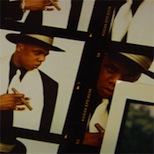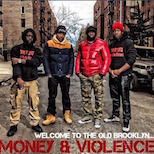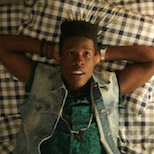Director/Actor Terence Nance Discusses His Film “An Oversimplification Of Her Beauty”
01.22.2013
LEISURE
One of the standout projects at last year’s Sundance Film Festival was An Oversimplification of Her Beauty, director Terence Nance‘s feature film debut. On the screen, Nance, the film’s lead actor (he wrote, produced, edited and scored the movie ) – “documents the relationship between Nance and a lovely young woman as it teeters on the divide between platonic and romantic.” The film is largely based on events and circumstances that happened off the screen, specifically Nance’s real-life relationship with lead actress Namik Minter. Using past experiences, live action and animation, with An Oversimplification of Her Beauty, Nance tells his story and develops a connection with the audience by channeling many of the precarious emotions often affiliated with love.
Life+Times talks with Nance about his directorial debut and the creative process behind it.
Life+Times: Walk through the different stages of creating this film. It started back in 2006, initially as a short film, so how have you gotten to this point now?
Terence Nance: I was in school – my first year of school – in 2006. I met Namik – the story is depicted in the first 15 minutes of the movie – and I decided to make a movie about it to deal with what was happening between me and her in a way that I thought would only be between me and her, but also satisfy this idea for a short film that I wanted to make which I thought would be five minutes. The audiences relationship with the characters on screen is inverted from a voyeuristic one to a participatory one, which is why the movie was [originally] called How Would You Feel?, kind of asking the audience to participate in it and put themselves and their personalities into the circumstances depicted on the screen. So, I finished that, screened it, put it away, finished school, started doing other things, but I think I came back to it because I wanted to approach the story more honestly. The first story was fiction, it had no implications of being something that actually happened in life. So I wanted to approach it in a more honest way, in a way in which I had more skin in the game I guess, because I felt like I was sort of being scared initially by not doing that. That’s how I started to extend it, and it took about six years because it’s my first feature film and I didn’t really understand how to produce that much animation. It just took a long time to make all that happen and it finally premiered at Sundance last year. It was very well-received critically and it played at about 40 film festivals. It attracted a lot of really, really respectable co-executive producers like JAY Z, Wyatt Cenac, Joy Bryant, and dream hampton. Since the film has premiered there [Sundance], and it’s out to the people on some level, a lot of what I’m proud of in hindsight is just being able to approach a story of being in love in a way that only I could tell it, and in a way that speaks to my specific voice as a person and an artist. To me, that’s what makes art interesting, a variety of voices, and seeing the world through somebody else’s eyes.
L+T: How did bringing in all these different executive and co-executive producers (Paul Bernon, Jason Weissman, Joy Bryant, Wyatt Cenac, Jocelyn Cooper, dream hampton, Hank Willis Thomas, Natasha Logan, Juliet Gilliam, JAY Z) help you polish the whole thing off?
TN: The whole process of bringing those people in is the brainchild of one of the film’s producers James Bartlett, who is also the Executive Director at the Museum of Contemporary African Diasporan Art. The museum also co-produced the film, so it was his brainchild once the film was done, to try and build a network of mentors and connectors around the film that could enable it to reach a wider audience, and at the time, also raise money to distribute the film and finish some things that needed to be finished. For me, what it is is really a network of people who I, and the film scene in general, can look to for avenues to get the film into spaces and places that it would not had we not had access to those people. So you have people like Hank Willis Thomas, Wangechi Mutu, and Natasha down at Art Basel talking about the film, getting it into museums; you have dream, Joy, and Wyatt in the film, tv, and literary industry, Paul, Jason, and Juliet in the business community; and JAY Z, you just mention his name and the hip-hop community picks up on it. So when you make a film you want it to get on the most visible platforms and for me, one of the many ways that having co-executive producers helps is that they have access to platforms that you wouldn’t have access to if they weren’t involved, obviously that’s on top of fundraising and the normal things that co-executive producers do.
L+T: Talk about mixing in animation with live action and why you wanted to do that.
TN: The film for me is a very direct retelling of a story about love, and a lot of that is told through me, Namik and other characters reenacting moments from our lives and moments in which we interacted with each other. But a lot of the story is stuff that’s not re-enactable, like me writing a letter to her or her responding to that letter or a dream that I had. You can’t film a dream or it would be boring to film me just reading a letter, so the animation came in when we were trying to document the un-documentable on some level. That speaks to what some of the emotions and nuances of feeling, and the nooks and crannies of the experiences were in ways that are visually interesting, and more than interesting, just visually accurate to what emotions the scenes are trying to depict in a way that wouldn’t be served by live action.
L+T: How much of the film is based on your real relationship with Namik, and how did you all having that relationship make it different, easier, awkward or whatever when you all were filming?
TN: Namik is the reason why the film exists on many levels. It’s inspired by my relationship with her. It’s a testament to her beauty, her grace, how attractive she is – not just physically attractive, but how much she attracted me in my mind and my interests – so I think the reason why the film works on many levels is because of her willingness to be parting to it by just showing up on the first day, or just being around in my life. At the same time, me and Namik’s relationship, while the film is very visible, the film is only a small part of our relationship. We’ve done other projects together and will continue to other projects together, this just kind of happens to be the one that popped. The question kind of makes it seem like the film would have an effect, but it wasn’t awkward, she was always cool about everything. From my particular perspective, that it wasn’t awkward or anything I think is a testament to her maturity and grace and general greatness.
L+T: How did you land on the title?
TN: It’s a line in the movie and I think that’s what the movie is, it’s an attempt to tell a story about this woman – and all the women in my life on some level – it’s an attempt for me to explain who they were to me and how they brought me to a place of emotional awareness and emotional maturity. But it is just an hour-and-a-half movie, that depicts not only a section of my life, but an even smaller section of these characters’ identities because I only know what they were to me when I was privileged enough to be around them, so it’s inherently “an oversimplification” of all these goddesses.
L+T: The idea of Black male vulnerability seems to be something that you’re exploring, which isn’t necessarily depicted very often. Would you agree with that?
TN: I agree that it’s not very often, but I do think that what I’m doing has several precedents. I think that She’s Gotta Have It explored Black male vulnerability, that was 1987. I think that there are so many popular and strong images of Black male aggressiveness, and emotional distance, emotional illiteracy, that maybe the examples that have always existed of Black male vulnerability are not really ignored, but people don’t just remember them. Even if you watch something like The Wire, I think Wallace is an example of Black male vulnerability, or D’Angelo [Barksdale from The Wire], but a lot of the other characters were the inverse. Something like that has both in it, but you only remember Marlo. I think that these things exist in media, even in popular media, but maybe that’s just not what audiences or critical discourse are attracted to.
L+T: The end of the film’s trailer reads “advancing Black cinema”. What are your thoughts on the current Black cinema, and how does this film, advance it, enhance it, etc.?
TN: We have a collective called Cinema Stereo, myself and several other Black filmmakers and filmmakers that make stories that exist within Black culture. I’m excited about Black cinema, I think that there is a plethora of young filmmakers, Black, white, of all ethnicities and cultures who are making really interesting, quality films that exist within the universe of Black culture and I’m excited about that. A lot of us are on our first or second film, so I think we’re just really at the cusp of a major wave of production, and I hope – I’m trying to do everything I can – to make sure that comes to fruition and that there’s a prolific production period of filmmakers of our generation exploring these stories. I think there’s already examples of that happening. At Sundance in the last three years, there’s always been three or four really quality Black films with characters and scenarios that have never been seen before like Pariah, Fruitvale this year, Newlyweeds this year. So it’s happening, I’m just happy to be a part of it.
L+T: Talk about the musical aspect of the film. There’s an album coming out in conjunction with the film, correct?
TN: Yeah, that’s correct. It has the same title as the film. I scored the film with songs that I had written. I’ve been doing music, writing songs for as long as I’ve been doing anything else. My uncle’s a musician and so are my brothers, and me and my brothers have a band together. When we premiered the film at Sundance, we also performed the music for the film and we’ve done that at a few other festivals – at Rooftop and we did it at the Brooklyn Museum as well. The music element to me is as important as the film. For me, it’s a film and music project, it’s not just a film. I’m really excited for when the DVD comes out with the album later this year so people can get the whole experience. The general form of the film is a blues song, in that blues is sort of a formal art-making process the way it memorializes negative experiences in a melodic way. For me, that’s what the film is and the music follows suit.
L+T: You’ve classified your music before as “art-funk.” Expand on what that is.
TN: For me, the word funk is very loaded. The contemporary understanding of it is like “Atomic Dog” or something. To isolate George Clinton and all of Funkadelic’s discography, they’re a-stylistic almost. They have country tunes, bluegrass, every genre of music that you could imagine on there, especially in the ’70s. The later stuff kind of started to homogenize itself to that “on the one” sound, but funk for me, as exemplified in the diversity of influences that they had was music within Black culture that was influenced by every genre, by any and everything, but the thing that unified it was a Black sense of time and aesthetic of singing rooted in gospel. For me, that’s what funk is. The only difference between funk and rock – rock is not a genre that means anything anymore – basically is a European sense of timing and a European way of singing, so they kind of go hand-in-hand. There’s all these qualifier words for the genre of “rock,” you have art-rock, punk-rock or whatever. So, I choose to qualify funk with art. That’s a long way of explaining it, but basically it’s all types of influences but a Black sense of time and a Black way of singing, or way of singing rooted in the Black church.
An Oversimplification Of Hear Beauty will be released on April 12, 2013 in select markets. Click here for more information.





